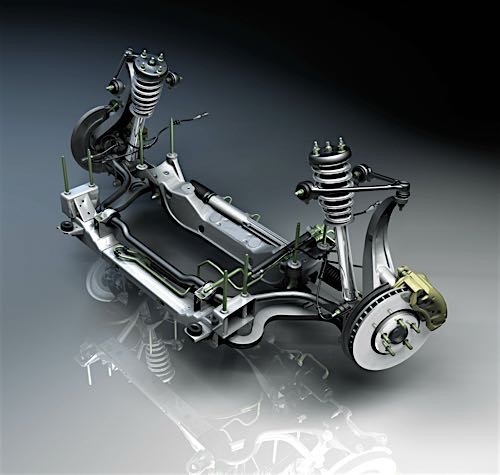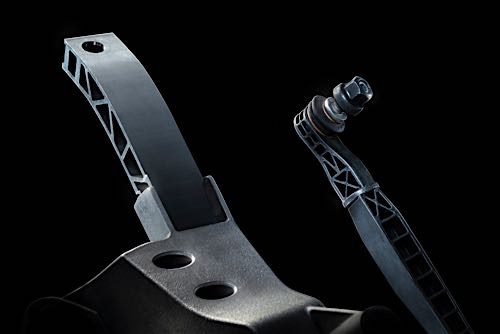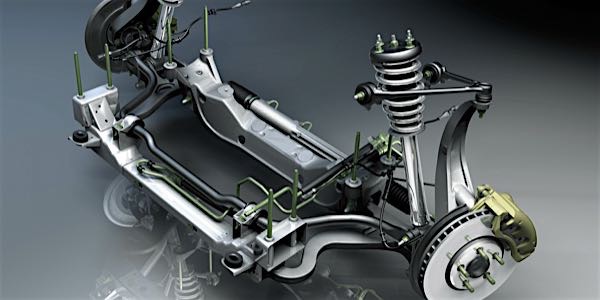
It is possible to get all the angles right during an alignment and still get wear on the outside and inside tire edges after a few thousand miles. What could have gone wrong in the interim? The answer could be the sway bar or the links.
Alignment angles are not static, which is critical for technicians to understand. Putting a vehicle on the alignment rack and getting the static angle measurements is only a small snapshot, and these measurements can be an incomplete picture of what happens when the car takes a corner.
The geometry and pick-up points of a suspension change in relationship to the road as the vehicle’s body pitches and yaws. As the pick-up points change their position, angles like caster, camber and toe fluctuate while the vehicle is cornering.
Sway bars are effective at controlling side-to-side movement of the body on a suspension. Sway bars connect left and right wheels together through short-lever arms linked by a bar that acts as a spring. A sway bar increases the suspension’s roll stiffness while increasing the stiffness of the springs at the wheels. This is the secret sauce for many luxury vehicles.
If a sway bar is not working, a 25 mph turn may produce the same amount of body movement and weight transfer as if the car was taking the same turn at 45 mph. This increased body movement makes for excessive dynamic camber and toe. Unnecessary camber and toe will cause premature tire wear.
Two Extra Springs
If sway bars did not flex, they would transfer force directly from one side of the suspension to the other. Every bump and body movement would be instantaneously transferred to the wheel on the other side. To avoid turning an independent suspension into a trailing arm beam axle, a sway bar acts as a torsion bar spring. The shape, attachment points and diameter of the sway bar can be tuned to impact stiffness. Bushings can also be tuned to dampen some unwanted movements.
The sway bar is part of the total suspension package that includes the springs and dampeners. If a manufacturer gets the settings optimized, the car will have balanced mechanical grip and controlled body roll. But, if the sway bar, springs and dampeners are worn or broken, it can result in unbalanced handling and increased body roll. This could cause the vehicle to understeer or oversteer or lack mechanical grip.

Evolving Sway Bars
Compared to 25 years ago, sway bars are more sophisticated. Before, bars were just hung from the frame and attached to a stamped steel control arm with a link that was just a threaded rod with rubber bushings stacked on both ends. Over the past decade, sway bars have been mounted in engine bays and behind subframes. New designs can be hollow or even equipped with actuators that can change stiffness, like on some BMW models.
The links attaching the sway bar to the control arms or struts can be cast or made of composite plastic materials like on the latest generation of the Camaro. The ends of the links have ball joints and bushings that are often pressed into the control arm.
These links can wear out over time or become damaged, but the driver may not notice the difference in handling. The most common complaint is noise made by the sway bar or links. When a link has play or a bushing is worn out, the noise can mimic everything from a bad upper strut mount to a ball joint issue.
Diagnosing the noise may take detaching the links to isolate it, or extra test-drive time. You can use a remote microphone or “chassis ears” that can be attached to a link or control arm. These can be used to amplify the sound made by the component without amplifying noise from other components.
When replacing sway bar links, it is a good practice to inspect the sway bar bracket bushings. On modern vehicles, sway bar bracket bushings can be located in the engine bay and are subjected to underhood temperatures and degradation by leaking oil and fluids.














